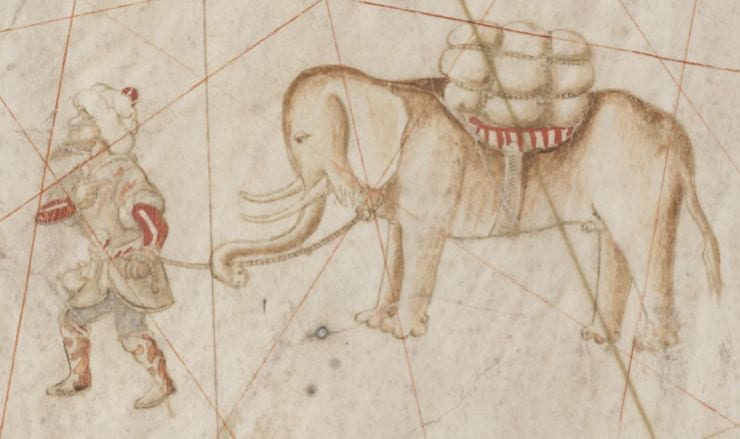Figure 5.6. Elephants
Detail from Caverio, Planisphère nautique, 1506, Bibliothèque Nacionale de France Paris (left); Martin Schongauer, An Elephant with Howdah, ca. 1483, Cleveland Museum of Art (center); and detail from Waldseemüller, Universalis Cosmographia, 1507, Geography and Map Division, Library of Congress, Washington, DC (right).
Caverio and Waldseemüller turned to print sources when creating the elephants that each placed in South Africa. Caverio’s stationary elephant carries a pack on its back, and its body resembles that of an ox, while its ear is that of a dog (above, left). The likely model for Caverio’s elephant is the print by Ludwig Schongauer, see below. Waldseemüller’s elephant is walking, has clearly delineated toes, and a large fan-shaped ear (above, right). Comparing Caverio’s elephant to Waldseemüller’s, it is clear that Waldseemüller or the artisans working on the map did not simply copy the elephant from Caverio’s Planisphère nautique, nor even the print by Ludwig Schongauer. Instead, they made alterations in how the elephant was drawn and cut. These changes most probably derived from another printed image of an elephant, made by Ludwig’s brother Martin, (above, center).
Ludwig Schongauer (c. 1440–1494), Elephant. Vienna Museum of Art? Wikimedia Commons.
Caverio, Planisphère nautique, 1506, Bibliothèque Nacionale de France Paris.


